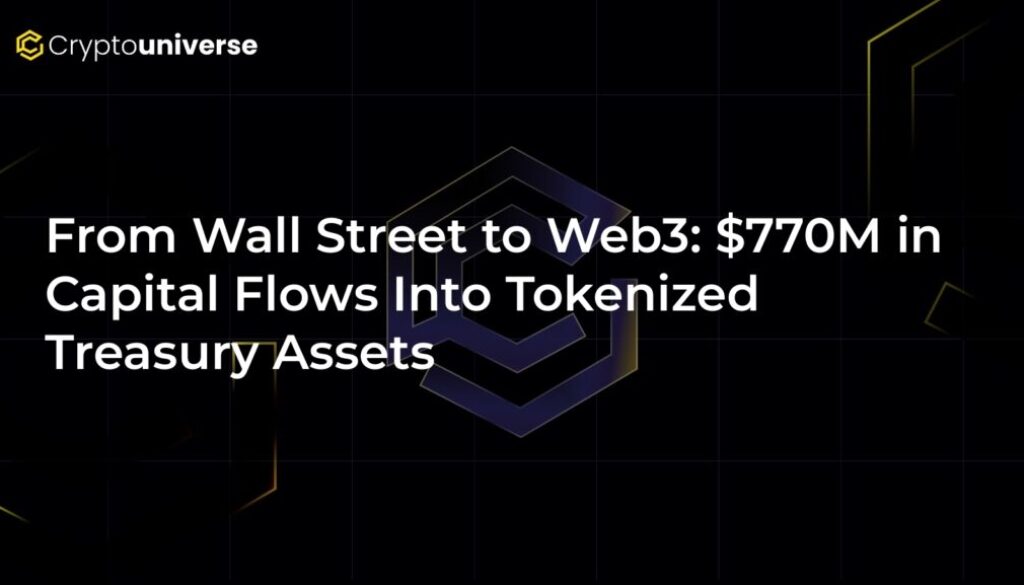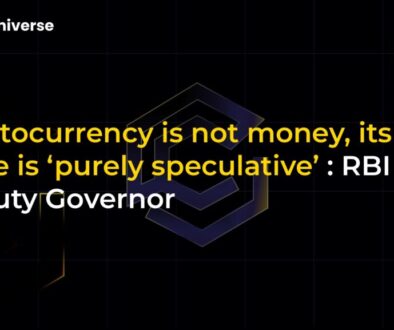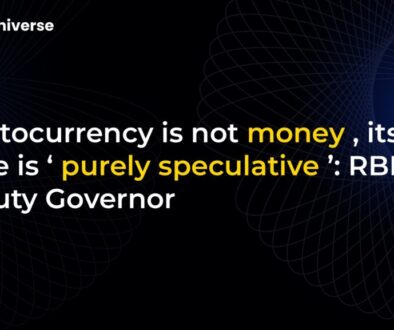From Wall Street to Web3: $770M in Capital Flows Into Tokenized Treasury Assets

The Great Convergence: Wall Street’s Safest Bet Arrives in Web3
The worlds of traditional finance (TradFi) and decentralized finance (DeFi) have long been seen as parallel universes, operating on different principles and technologies. But a powerful new bridge is being built, and capital is flowing across it at an unprecedented rate. The building blocks of this bridge? Some of the most stable and trusted financial instruments on the planet: U.S. Treasury bonds.
A quiet revolution is underway, marked by the tokenization of real-world assets (RWA). At the forefront of this movement are tokenized treasuries, which have seen a meteoric rise in adoption. This trend signifies more than just a new product; it represents a fundamental shift, merging the stability of government-backed securities with the efficiency and accessibility of blockchain technology.
What Exactly Are Tokenized Treasuries?
Let’s break it down. At its core, a U.S. Treasury bond (or T-bill) is a loan you make to the U.S. government. In return, the government pays you interest. For decades, these have been considered the “risk-free” benchmark in finance—a safe haven for capital.
Tokenization is the process of creating a digital representation of a real-world asset on a blockchain. Think of it like a digital deed or certificate of ownership that can be traded instantly, 24/7, anywhere in the world.
Combine the two, and you get Tokenized Treasuries: digital tokens that represent a direct claim on an underlying U.S. Treasury bond. Each token is backed 1:1 by the real-world asset, held securely by a custodian. This allows crypto-native investors, DAOs, and even traditional firms to access U.S. government bond yields directly from their digital wallets.
The Perfect Storm: Why the Influx Now?
The explosive growth in this sector didn’t happen in a vacuum. A confluence of market conditions created the perfect environment for this innovation to thrive. What started as a significant milestone, with <$770M in Capital Flows Into Tokenized Treasury Assets> by late 2023, has since ballooned to well over $1 billion, signaling an accelerating trend.
So, what’s driving this surge?
- The Hunt for Sustainable Yield: In response to inflation, central banks have raised interest rates. This means traditional U.S. Treasuries are now offering attractive yields of 4-5% or more. In contrast, yields on DeFi staples like stablecoin lending have become less predictable and often lower. For crypto treasuries and DAOs sitting on large stablecoin reserves, moving that capital into tokenized treasuries is a logical step to earn a stable, low-risk return.
- Institutional Giants Enter the Fray: This isn’t just a crypto-native phenomenon. Financial behemoths are leading the charge. Franklin Templeton, a trillion-dollar asset manager, launched one of the first and largest tokenized U.S. Treasury funds on the Stellar and Polygon blockchains. More recently, BlackRock, the world’s largest asset manager, launched its own tokenized fund, BUIDL, on the Ethereum network, further legitimizing the entire space.
- Demand for On-Chain Stability: The crypto market is notoriously volatile. Tokenized treasuries offer a native on-chain solution to hedge against this volatility without having to off-ramp funds back into the traditional banking system. This allows capital to stay within the crypto ecosystem while earning secure, predictable returns.
Who Are the Key Players?
The ecosystem is rapidly expanding, with both TradFi titans and crypto-native innovators building the infrastructure.
- TradFi Institutions: Franklin Templeton and BlackRock are the headline names, bringing immense credibility and regulatory experience. Their involvement is a massive green light for more conservative capital to enter Web3.
- Crypto-Native Platforms: Companies like Ondo Finance, Matrixdock, and Backed Finance have been pivotal. They specialize in creating the tokenized products and building the platforms that make these assets accessible to DeFi users, often integrating them into the broader DeFi ecosystem.
The Benefits of Bringing Treasuries On-Chain
Tokenizing a centuries-old financial instrument brings a host of 21st-century advantages:
- Global Accessibility: Investors worldwide can access U.S. treasury yields 24/7 without needing a traditional U.S. brokerage account, breaking down geographical and time-zone barriers.
- Increased Efficiency: Blockchain technology allows for near-instantaneous settlement and transfer of ownership, cutting out the costly intermediaries and lengthy processes of the traditional financial system.
- Radical Transparency: Every transaction and ownership record is immutably stored on a public ledger, offering a level of transparency that is impossible in the opaque world of TradFi.
- DeFi Composability: This is the true superpower. Tokenized treasuries can be used as high-quality collateral in DeFi lending protocols, serve as the foundation for new structured products, or be used to back stablecoins, creating a more robust and sophisticated on-chain financial system.
Navigating the Challenges and Risks
Despite the immense potential, the path forward is not without obstacles. Key risks include:
- Regulatory Uncertainty: The legal and regulatory framework for tokenized securities is still being written. How regulators like the SEC will classify and govern these assets remains a critical open question.
- Centralization & Custody Risk: The underlying treasury bonds are still held by a centralized custodian. A failure of this custodian could jeopardize the assets backing the tokens, reintroducing a single point of failure that DeFi aims to eliminate.
- Smart Contract Risk: The technology itself is not immune to vulnerabilities. Bugs or exploits in the smart contracts governing the tokens could lead to a loss of funds.
The Tip of the Iceberg: What’s Next for RWA?
The excitement around tokenized treasuries is a preview of a much larger narrative: the tokenization of all real-world assets. Treasuries are the perfect starting point due to their simplicity, liquidity, and low-risk profile. But the same technology can be applied to a vast array of assets:
- Real Estate: Fractionalizing ownership of commercial or residential properties.
- Private Equity & Venture Capital: Making illiquid, high-growth investments accessible to a broader range of investors.
- Art, Collectibles, and Carbon Credits: Creating liquid markets for historically illiquid assets.
This movement has the potential to unlock trillions of dollars in value currently trapped in inefficient, traditional markets and bring it into the dynamic, open world of Web3. The flow of capital from Wall Street to Web3 is no longer a trickle; it’s becoming a steady, powerful current. Tokenized treasuries are simply paving the way.


